

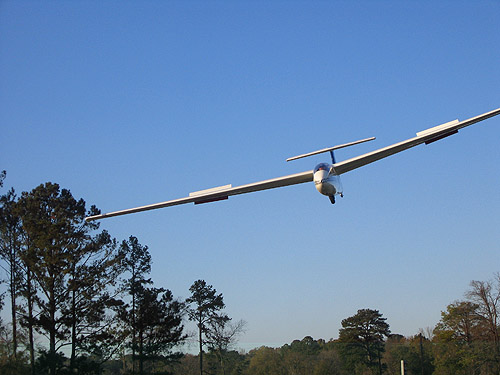
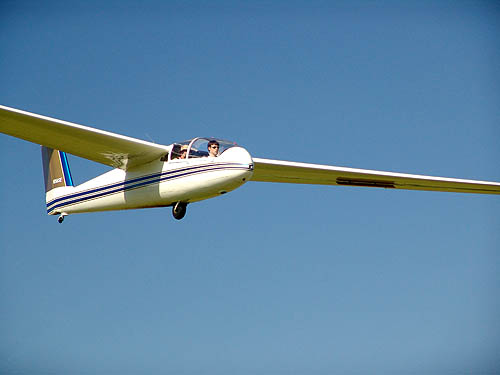
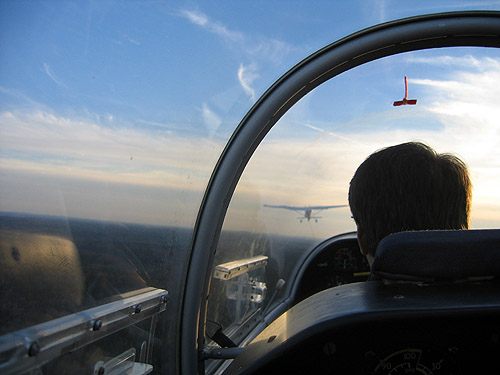
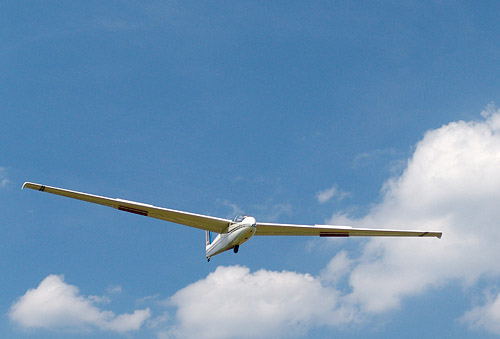

A view from Inside the L-23 - looking over at Ray Cornay in his LS-4, RD.
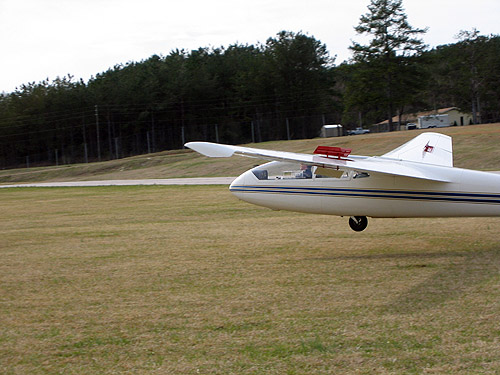
L-23 Touching Down,
photo by Ray Cornay.
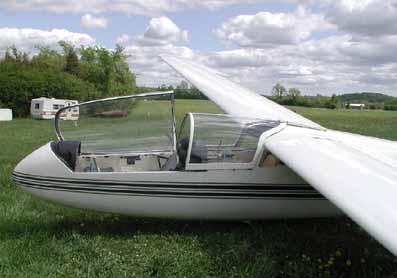
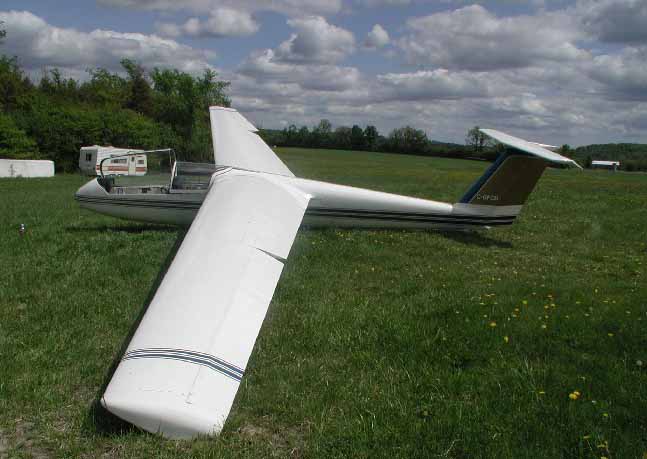
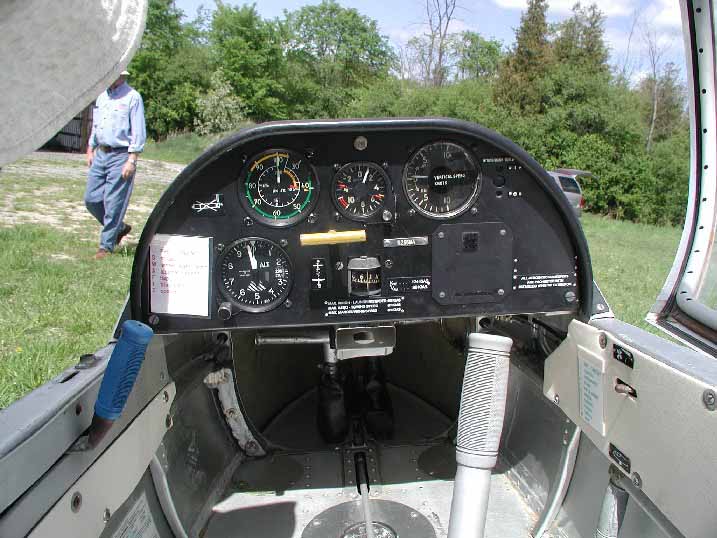
Front Cockpit
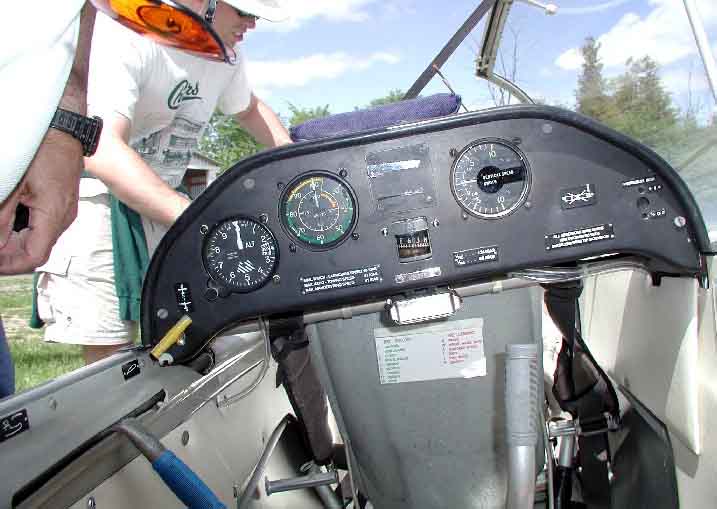
Rear
Cockpit
Below information
coutesy of Blanik America
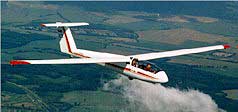
|
The original L-13 BLANIK was built by the LET factory in 1958. Since then almost 3000 L-13s were made, and many of them are still flying all over the world. The two-seat, all-metal L-13 became very popular due its durability, reliability, and ease of handling. The designers at LET have applied their experience from the L13 to the creation of a new glider, the L-23 SUPER BLANIK. The new glider retains the excellent flying and maintenance characteristics of the L-13, while visibility and handling are further refined. Among the many improvements are the new T-tail (to minimize damage during land-outs), the swiveling tail wheel (for easier ground handling), and the new canopy (enhancing visibility to the sides and back). The L 23 is an all-metal, two-seat, self-supporting, high-winged glider. Due to its all-metal construction, the glider is guaranteed a service life of 6,000 hours assuming that mostly ground-launching is used. With mainly aero towing used in North America, the service life may be extended to well over 10,000 hours. The L 23 has been approved for all stages of flight training from basic to advanced cross-country, aerobatic, stunt, and instrument flying. Removable wing tip extensions of one meter each may be installed. Among other features available are one-piece canopy, wing tip wheels, and more comfortable pilot seats. The L23 is manufactured according to JAR-22
requirements and is Type-Certified in most countries of the world. Technical Data / PerformanceWing span 53.1 ft, with optional wing tip extensions 59.7
ft Standard EquipmentThis all-metal two-place glider comes with a wide array
of accessories included as standard features: Eleven instruments including
two total energy variometers 1,000 ft/min or 10 kts with a fin-mounted
probe, two altimeters 20,000 ft, two air speed indicators in kts, one
variometer 60 kts, two electric turn and bank indicator, factory front
aerotow and center of gravity winch hooks, white color all over with optional
trim stripe, 4-point seat belts, seat cushions, seat back cushions, wing
installation drift pin, extra seat with 33 lb ballast, cockpit cover,
pitot cover, winch tow rope, wing tie-down rings, extensive 48-part tool
kit, set of spare parts, first aid kit, flight manual, maintenance manuals
vol 1 and 2, levelling and rigging record, weight and balance record. OptionsFrequently ordered options are: Wing tip extensions (improving the L/D from 28:1 to 32:1), one-piece canopy, control locks and ground anchors, special seat back rests, strut charger, spare parts catalog. Also available as options are G-meter, 35,000' altimeter, radio and installation, special upholstery, center of gravity bottom winch tow hook, strut seal kit, all-metal glider finish, covers for the entire glider, and custom paint ornamentation.
ConstructionFUSELAGE
OperationThe L23 is a very enjoyable glider to fly. The take-off roll is smooth even on rough ground thanks to a very effective shock absorber on the main wheel. On tow, the aircraft is very stable and can be flown hands-off when trimmed with the responsive and easy to adjust elevator trim. The controls are accurately tuned and balanced, and move lightly with little friction. The fore-and-aft stability is excellent with no tendency to over-pitching. The lateral handling is very effective with a roll rate of 4 seconds from 45° to 45° at near the best glide speed. The optional wing tip extensions bring the glide ratio from the standard 28:1 to 32:1, making the L-23 a perfect glider for cross-country training and badge flying. The airbrakes are effective and gradual in application. Side-slipping is excellent. On the ground the glider is very easily maneuverable thanks
to the swiveling tail wheel and wing tip wheels. If tail lifting is required
to move the tail over especially rough ground, the newer models come with
permanently mounted handle bars just ahead of the vertical fin. The access
to the cockpit has been greatly improved over the L13 Blanik. The L23's
cockpit sides have been lowered full 4" (10 cm), and the top of instrument
covers include clever hand holds for easy exit. The new one-piece canopy
closes and opens from either seat, and the small aft top canopy is removable
if flying without it is desired on especially hot days. Seats and back
rests have been redesigned. The front pan lower rim, straight originally,
has been oval-shaped to ergonomically contour the lower back of the front
pilot. The aft pilot's back rest has been the most extensively redesigned.
It is no longer a plain bucket, instead it is an integral extension of
the seat without any protrusions and is upholstered. It is one of the
best recent improvements to the L23. L-23
Flight Manual [.pdf reference document] |